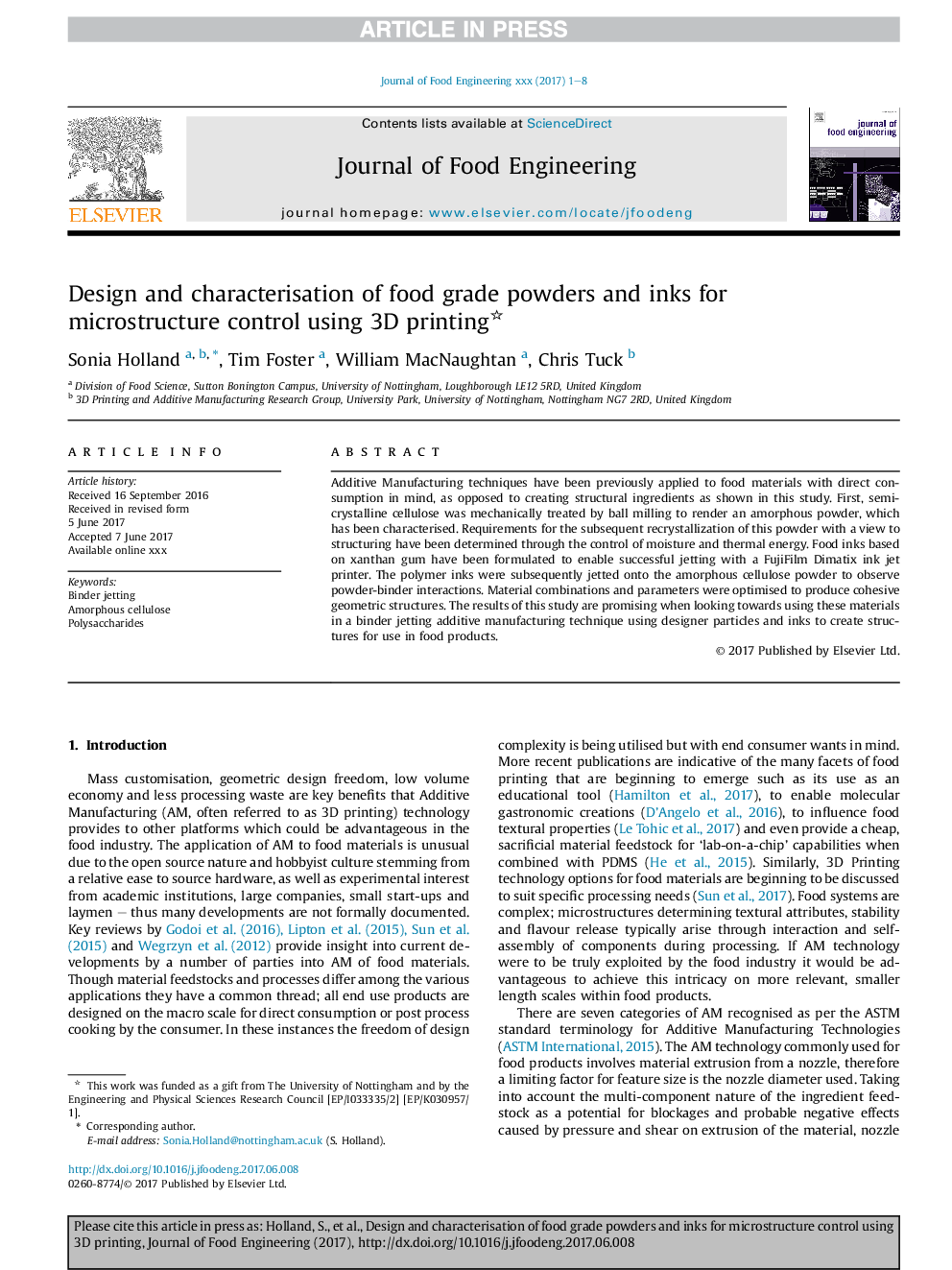| Article ID | Journal | Published Year | Pages | File Type |
|---|---|---|---|---|
| 6664826 | Journal of Food Engineering | 2018 | 8 Pages |
Abstract
Additive Manufacturing techniques have been previously applied to food materials with direct consumption in mind, as opposed to creating structural ingredients as shown in this study. First, semi-crystalline cellulose was mechanically treated by ball milling to render an amorphous powder, which has been characterised. Requirements for the subsequent recrystallization of this powder with a view to structuring have been determined through the control of moisture and thermal energy. Food inks based on xanthan gum have been formulated to enable successful jetting with a FujiFilm Dimatix ink jet printer. The polymer inks were subsequently jetted onto the amorphous cellulose powder to observe powder-binder interactions. Material combinations and parameters were optimised to produce cohesive geometric structures. The results of this study are promising when looking towards using these materials in a binder jetting additive manufacturing technique using designer particles and inks to create structures for use in food products.
Related Topics
Physical Sciences and Engineering
Chemical Engineering
Chemical Engineering (General)
Authors
Sonia Holland, Tim Foster, William MacNaughtan, Chris Tuck,
